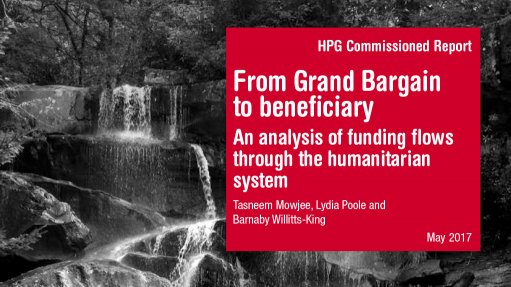
This study has been a first attempt at answering the apparently simple and important question: ‘How much funding reaches humanitarian aid beneficiaries?’
Focusing on the classification and analysis of expenditure, the paper has not sought to make any judgements about the value or benefit of these expenditures to the aid recipients. While this approach does not capture the quality of assistance provided to crisis-affected populations, the study aims to lay the foundation for further discussions about cost-efficiency, the quality of humanitarian assistance and the added value of each actor in the chain.
The study also contributes to the discussions around the Grand Bargain – an agreement between donors and aid providers that aims to get more resources into the hands of those in need. The Grand Bargain includes steps towards improving the transparency and efficiency of the humanitarian system. By providing a better understanding of different types of costs and how donor funding flows through the humanitarian system, it will also help to inform efforts towards empowering national and local humanitarian action – a core commitment at the World Humanitarian Summit.
Report by the Overseas Development Institute